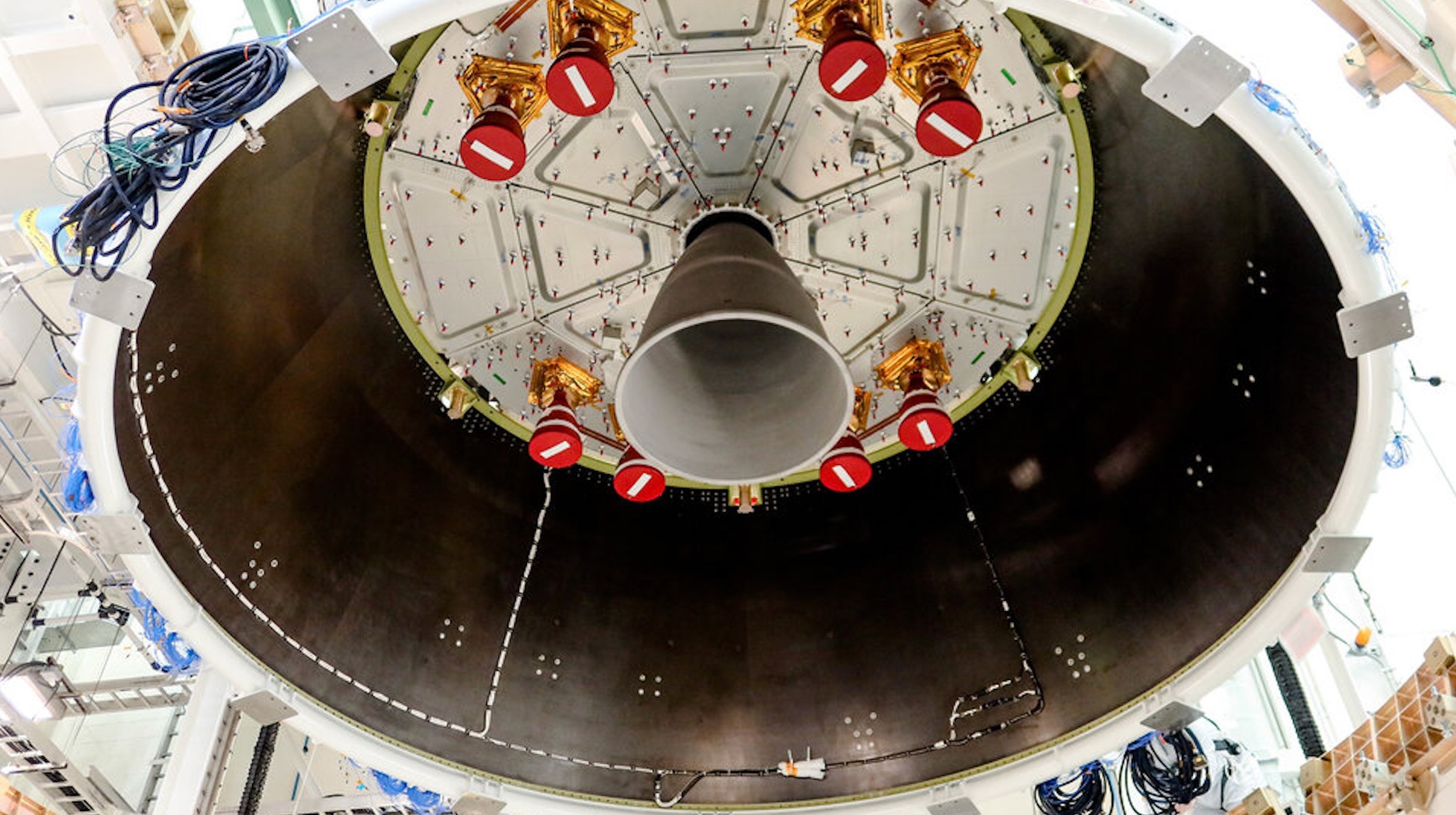Europe hands Artemis 2 moon ship's service module over to NASA (photo)
Papers were just signed to deliver the Artemis 2 service module into NASA's possession.

The next mission to carry humans to the moon is inching closer to reality.
The hardware that will supply power, life support, water, fuel and propulsion to the astronauts on board the Orion capsule during the Artemis 2 mission around the moon is now in NASA's hands.
The European Service Module-2 (ESM-2) arrived at NASA's Kennedy Space Center (KSC) in Florida in October 2021. Since then, the module has gone through extensive tests to ensure its reliability for the crew of astronauts it's designed to keep safe. Now, documents finalizing the transfer of ESM-2 from the European Space Agency (ESA) to NASA have been signed.
Related: Meet the 4 astronauts flying on NASA's Artemis 2 moon mission
A small ceremony was held at KSC on June 14, which included Artemis 2 astronaut Victor Glover, who toured the facility that day with Howard Hu, according to a NASA social media post. Hu, NASA's Orion program manager, penned his signature to the agreement alongside ESA's ESM production manager Anthony Thirkettle, according to the ESA website.
"The handover is a formality, but it is an important milestone for the program. It could not have been achieved without the tremendous effort of all the teams involved," Thirkettle said. "ESA will continue to work closely with our NASA and industry colleagues on getting the Orion spacecraft ready for launch and throughout the Artemis 2 mission."
Through its Artemis program, NASA is returning human exploration to the moon, this time with the aim of establishing a long-term presence on the lunar surface. Artemis 1 launched in November 2022, sending an uncrewed Orion into lunar orbit. Artemis 2 is the first crewed mission of the program. It will carry NASA astronauts Glover, Reid Wiseman and Christina Koch, as well as Canadian Space Agency astronaut Jeremy Hansen, on a journey around the moon and back that will last approximately 10 days.
Breaking space news, the latest updates on rocket launches, skywatching events and more!
The Orion capsule that Artemis 2 crew members will call home is completely reliant on its service module during the mission. The ESM stores and supplies crucial resources like air, water and electricity, and its fuel tanks and rocket engine serve as Orion's primary source of propulsion. According to ESA, the service module contains 33 thrusters, six fuel and storage tanks, and nearly 7 miles (11 kilometers) of wiring throughout the spacecraft's systems.
Think of Orion as a car. The service module is basically everything under the hood, and also the wheels of the car. Now that NASA officially has both pieces of its Artemis spaceship car, the agency can almost start putting them together. The ESM-2 must still undergo a few tests before engineers are able to mate the module with Orion. NASA also recently posted a photo of the service module being transferred to its Final Assembly and System Testing Cell for testing and integration.
If everything stays on schedule, Orion will be connected with the ESM-2 later this year. Once joined, the spacecraft will be integrated with the Artemis 2 Space Launch System rocket, which will be stacked inside the huge Vehicle Assembly Building at KSC. NASA is targeting November 2024 for the launch of the landmark mission.

Josh Dinner is the Staff Writer for Spaceflight at Space.com. He is a writer and photographer with a passion for science and space exploration, and has been working the space beat since 2016. Josh has covered the evolution of NASA's commercial spaceflight partnerships and crewed missions from the Space Coast, as well as NASA science missions and more. He also enjoys building 1:144-scale model rockets and human-flown spacecraft. Find some of Josh's launch photography on Instagram and his website, and follow him on X, where he mostly posts in haiku.
